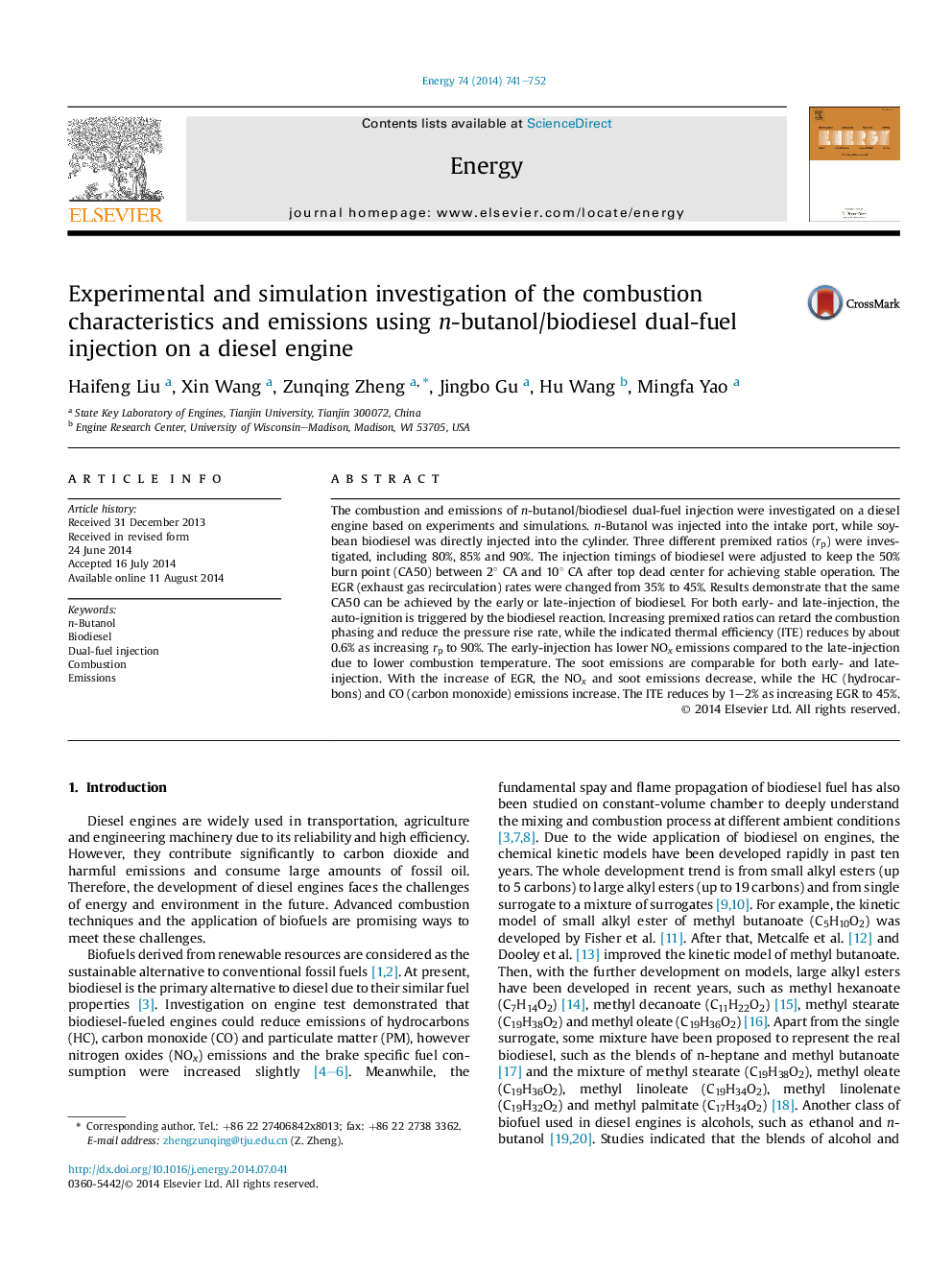| Article ID | Journal | Published Year | Pages | File Type |
|---|---|---|---|---|
| 1732506 | Energy | 2014 | 12 Pages |
Abstract
The combustion and emissions of n-butanol/biodiesel dual-fuel injection were investigated on a diesel engine based on experiments and simulations. n-Butanol was injected into the intake port, while soybean biodiesel was directly injected into the cylinder. Three different premixed ratios (rp) were investigated, including 80%, 85% and 90%. The injection timings of biodiesel were adjusted to keep the 50% burn point (CA50) between 2° CA and 10° CA after top dead center for achieving stable operation. The EGR (exhaust gas recirculation) rates were changed from 35% to 45%. Results demonstrate that the same CA50 can be achieved by the early or late-injection of biodiesel. For both early- and late-injection, the auto-ignition is triggered by the biodiesel reaction. Increasing premixed ratios can retard the combustion phasing and reduce the pressure rise rate, while the indicated thermal efficiency (ITE) reduces by about 0.6% as increasing rp to 90%. The early-injection has lower NOx emissions compared to the late-injection due to lower combustion temperature. The soot emissions are comparable for both early- and late-injection. With the increase of EGR, the NOx and soot emissions decrease, while the HC (hydrocarbons) and CO (carbon monoxide) emissions increase. The ITE reduces by 1-2% as increasing EGR to 45%.
Related Topics
Physical Sciences and Engineering
Energy
Energy (General)
Authors
Haifeng Liu, Xin Wang, Zunqing Zheng, Jingbo Gu, Hu Wang, Mingfa Yao,
